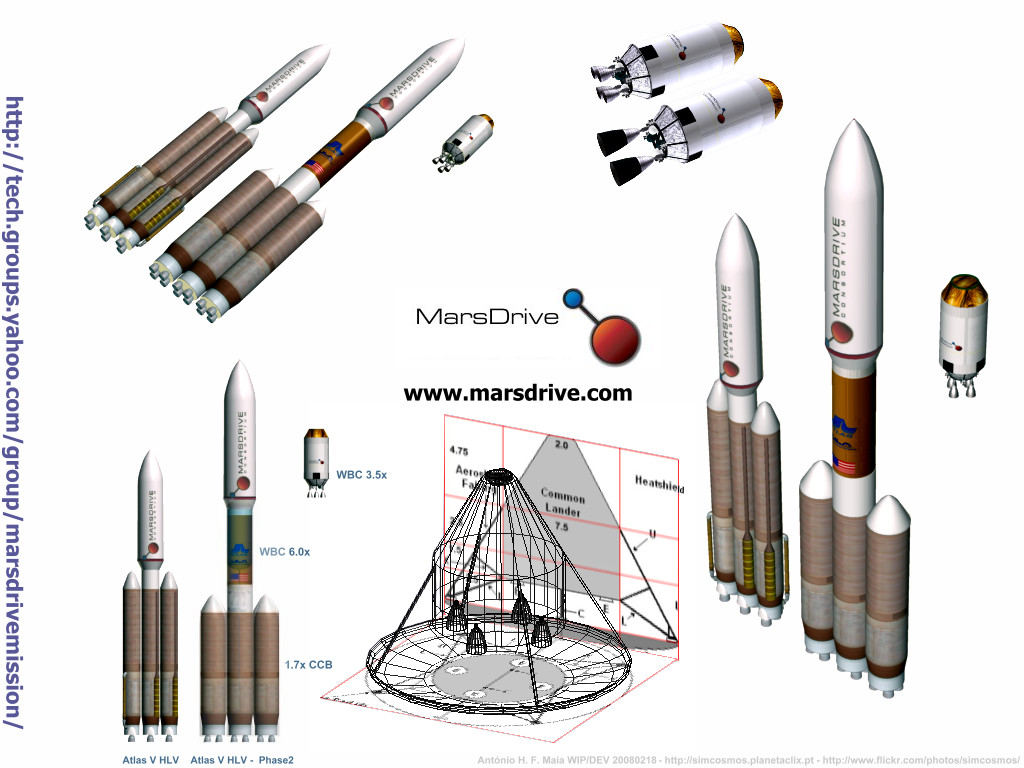http://www.ulalaunch.com/site/docs/product_cards/guides/AtlasVUsersGuide2010.pdf , page 351

8.2.3 Heavy-Lift Evolution
Development of the 5-m diameter evolved upper stage and 5-m diameter booster lay the foundation for further Atlas evolution to support potential growing customer performance requirements. As shown in Figure 8.2.3-1, combinations of these enhanced wide body booster cores with the evolved upper stage can produce a set of affordable heavy-lift solutions that deliver over 100 mT to LEO. Depending on customer requirements, one can either cluster five wide-body boosters to deliver 107 mT to LEO or, if even more performance is required, four wide body boosters can be clustered around an 8.4-m diameter core to deliver 140 mT to LEO. Both of these booster combinations are paired with the evolved upper stage and a new 8.4-m (27.6-ft) payload fairing.
The 5-m diameter booster tank is derived from Delta IV’s existing 5-m tank and is powered by a pair of RD-180 engines. The 8.4-m diameter core is derived from the Space Shuttle’s external tank and powered by five RD-180 engines. Both the 5-m and 8.4-m diameter booster cores can fly either as a single core, with strap on Aerojet SRBs (1 to 6), or as multi-core combinations with the use of either two or four 5-m, wide-body liquid rocket boosters (LRBs). The single core configurations provide ideal, highly reliable launch vehicles capable of supporting launch of large crew capsules. These super-heavy Atlas derivatives allow Atlas to support a broad payload range (9mT to 140 mT to LEO) with a common vehicle family.


